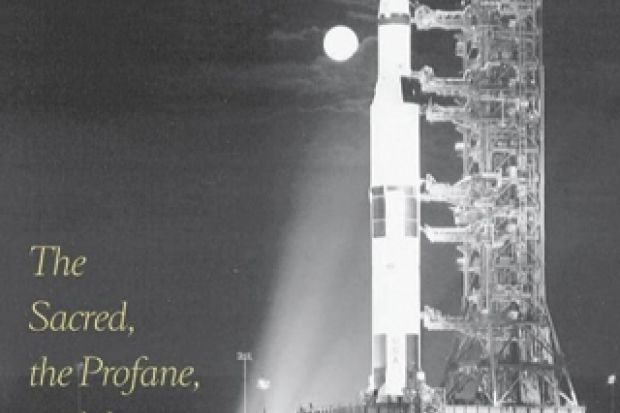Man has always looked to the heavens.” When I was teaching a space history course at undergraduate level, an inordinate number of students wanted to start their human spaceflight essays with some version of that sentence. I’d scribble on their drafts, suggesting that a more specific opening might better support their intended arguments. But at some level, their collective first way into the topic of human beings in space was telling. Man has always looked to the skies, often equating that rarefied air (or lack thereof) with the ethereal and even the spiritual. And when astronauts and cosmonauts started to enter that realm with piloted spaceflights in the early 1960s, the achievements did much more than simply surmount a technological hurdle. Human spaceflights were, by their very nature, transgressive, profound, profane and transcendent. Moreover, as Kendrick Oliver reveals in his book on relations between religion and the US space programme, examining the role of religion and faith in US culture during that age of technological ascendance tells us something new about that historical era.
Oliver analyses spaceflight and religion in a sophisticated manner, well informed by the scholarly literature of the “new aerospace history”, which examines intersections between space history and other disciplines or themes. This is not a facile recounting of Buzz Aldrin’s taking communion on the Moon or other such well-known stories. Instead, Oliver engages histories of theology and religious practice in a broad consideration of motivations, implications, transformations and reinforcements of religion in the history of spaceflight.
To address these topics, he considers the religious or secular motivations of those doing the work of spaceflight as well as the space-age theologies affected by their achievements. He explores at length the effects that the Apollo lunar landing missions had on the men who made them and on the worldwide audience that watched. Although individual rocket pioneers may have had varied secular or religious motivations for their individual work, Nasa - a technological agency loath to engage with social and political issues - operated from a stance that Oliver ultimately characterises as “operational agnosticism”. The agency especially shied away from religious topics after atheist Madalyn O’Hair’s lawsuit in 1969 over the reading from the Book of Genesis by the Apollo 8 astronauts on Christmas Eve 1968 made the notoriously controversy-shy agency even more nervous. In response, Oliver reminds us, American Christians petitioned the agency (in a campaign that continued well into the 1970s), demanding that Nasa protect the freedom of astronauts to express their faith, even during spaceflights. But Oliver is less interested in the happenstance overlap of religion and spaceflight than in the power of each to reveal something new about the other. The transformative religious experiences that some astronauts had, for instance, tell us as much about contemporary evangelicalism as they do about spaceflight.
What distinguishes Oliver’s book is his conscientious positioning of his analysis in two different frameworks: the historical understanding of how the US space programme developed and a sociological study of American religion in the 20th century that works to understand the relationship between secularisation, modernity and emergent evangelicalism. As usually told, those understood stories don’t sync up. Oliver finds his subject in their intersection in this historical moment. Questions of religion and faith, Oliver concludes, were ultimately central to understanding the American space age, a historical era that although sometimes seen as running parallel with contemporary social and political movements (“detached from its own time”) is actually rich with intersections with that larger story. That, ultimately, is the juxtaposition that interests Oliver most: how modernity and religion coexisted in the American space age.
To support his analysis, Oliver criss-crossed the US, combining research in Nasa archives with work at religious archives such as the Southern Baptist Historical Library and the Billy Graham Center Archives. As a scholar of US history, he explores these questions almost exclusively in the context of the US space programme. The atheistic declarations of cosmonauts offer only occasional counterpoints to his main narrative, for instance.
In the end, launching human beings into space profoundly reshaped how we see ourselves: whether or not it sparked transcendent moments of epiphany, the awareness of our fragile existence on the blue marble Earth could not be unknown once it was realised. But if Man has always looked to the heavens, the first efforts to launch people off this planet ultimately occurred in a context in which religion and modernity competed, coexisted and defined an era.
To Touch the Face of God: The Sacred, the Profane, and the American Space Program, 1957-1975
By Kendrick Oliver
Johns Hopkins University Press, 248pp, £21.00
ISBN 9781421407883 and 408347 (e-book)
Published 1 February 2013
Register to continue
Why register?
- Registration is free and only takes a moment
- Once registered, you can read 3 articles a month
- Sign up for our newsletter
Subscribe
Or subscribe for unlimited access to:
- Unlimited access to news, views, insights & reviews
- Digital editions
- Digital access to THE’s university and college rankings analysis
Already registered or a current subscriber?




